Ice Tray Battery
You probably know that voltaic batteries come in all kinds of shapes and sizes, from tiny button batteries to car batteries to huge industrial heavy-weights. […]
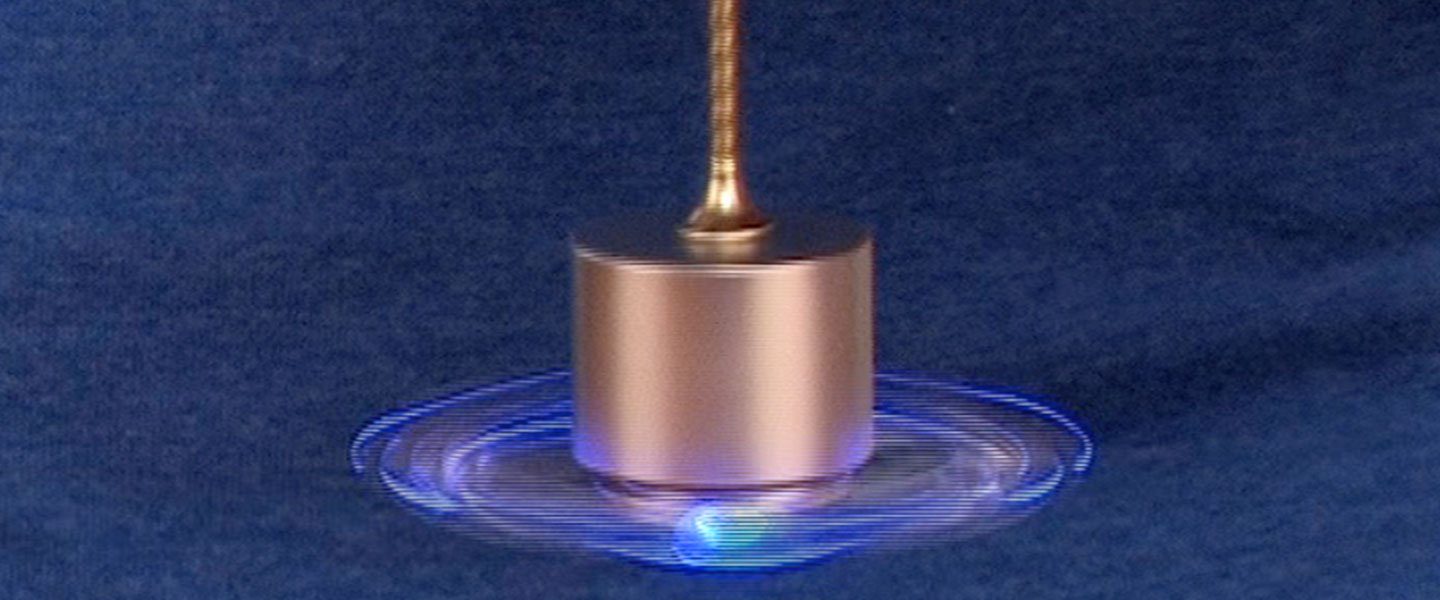
Electric motors are devices that turn electrical energy into motion. They are remarkable machines that come in all sizes and do all kinds of work for us. You’d be amazed at just how many motors help you get things done everyday. All motors run on pretty much the same principle: an electric current in a wire moves through a magnetic field producing a force which spins the wire. Motors can be very complicated but this is another way to build one of the simplest.
SICK Science® is a registered trademark of Steve Spangler, Inc. All Rights Reserved.
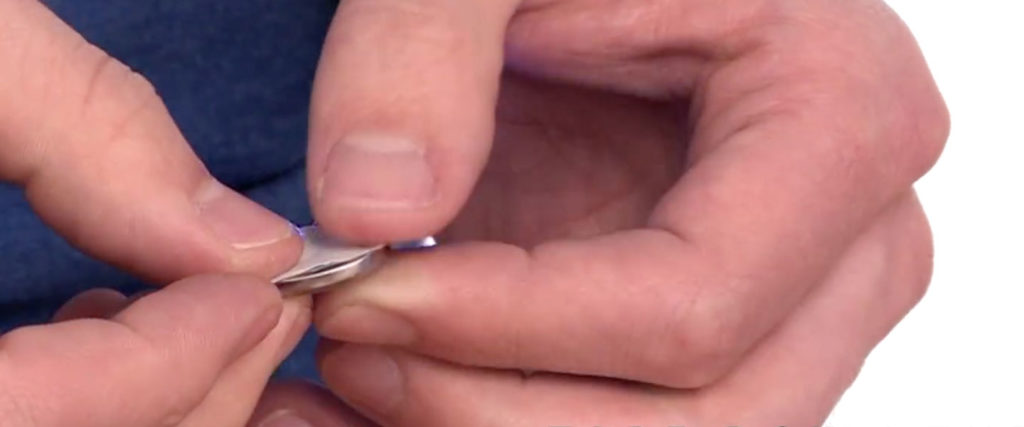
The button battery powers both LEDs. Hold it in one hand and an LED in the other. Slide the longer leg of the LED onto the positive (+) pole of the battery, pinch the legs to the battery, and… the LED glows! Tape the shorter leg to the negative (–) pole but don’t tape the longer leg.
NOTE: When a device functions only with a certain direction of electron flow (like an LED), it’s said to be a “polar sensitive” device (because of the “poles” on a battery). The LED won’t work if you reverse the battery. Try it. The longer leg is the positive side of the LED.
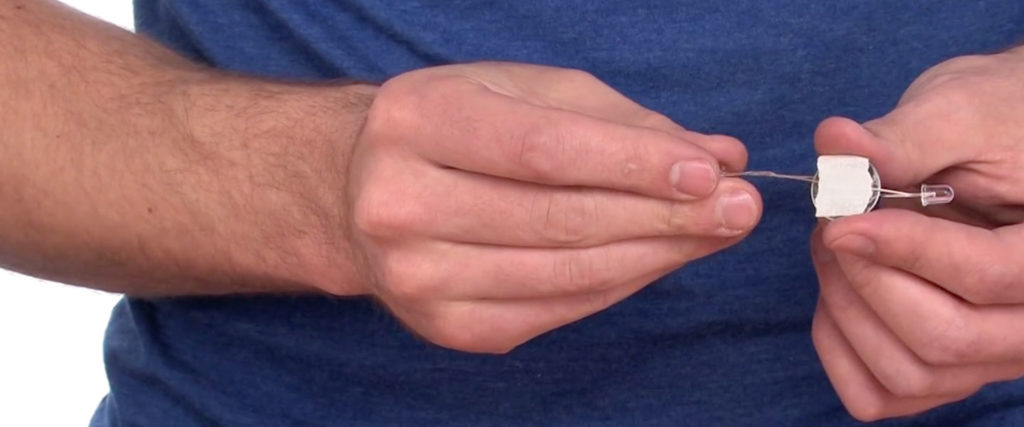
Slide the shorter leg of the second LED under the tape on the negative pole of the battery. The LEDs should be 180° apart from each other to balance the battery. The button battery looks like a propeller.
Do a “sanity check” and pinch the four legs to the battery to make sure both LEDs are working.
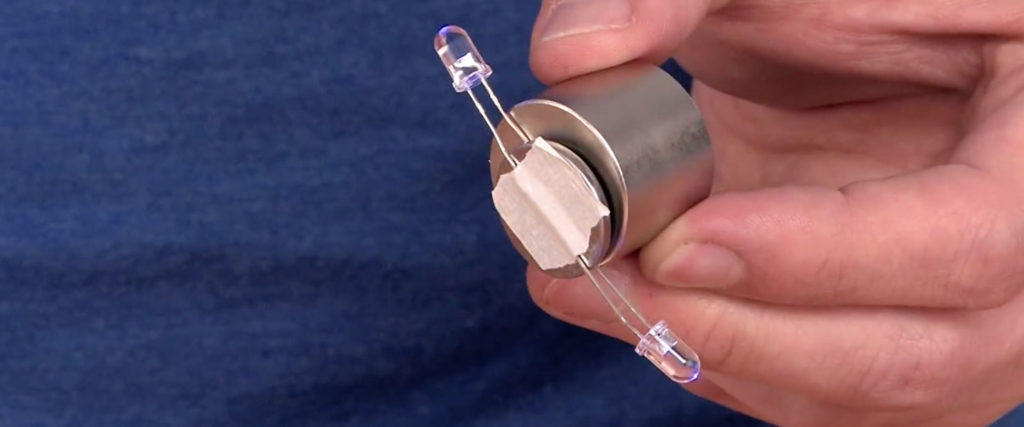
Attach the positive pole of the battery to one end of the magnet. NOTE: Neodymium magnets are strong so watch out for pinched fingers. Center the battery as much as possible so the LEDs are balanced. They should be glowing now, too.
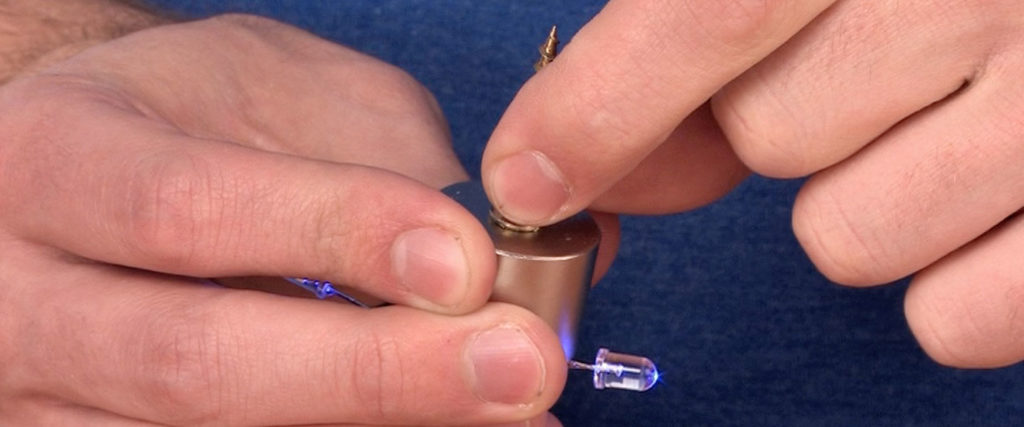
Center the flat screw head on the other end of the magnet.
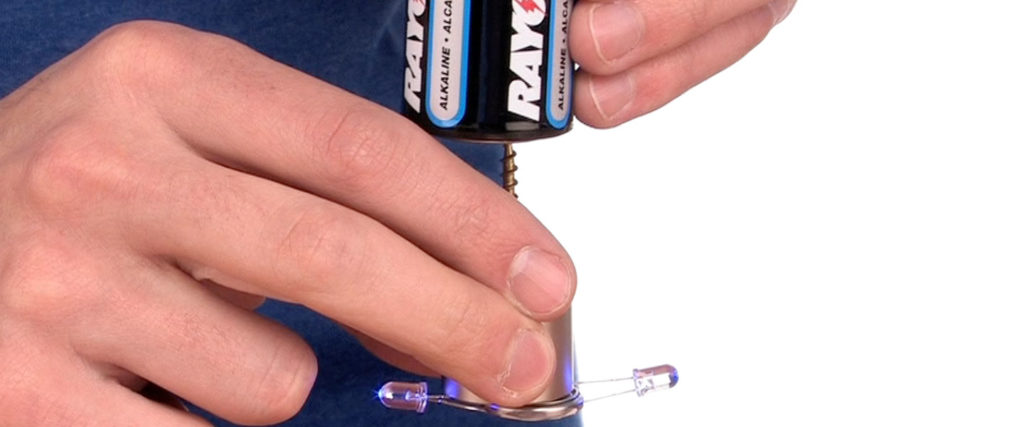
The tip of the screw is connected to the positive pole (the flat end) of the battery. The magnet holds everything together.
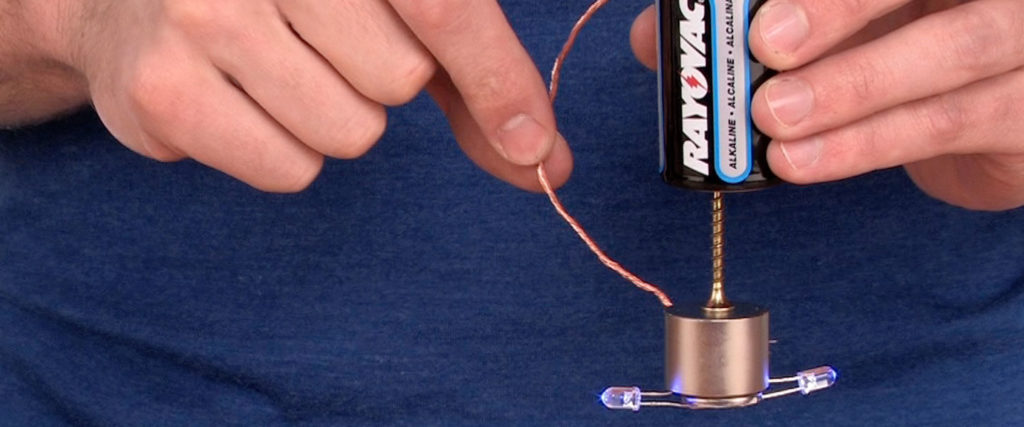
Bend the wire as necessary so you can touch the negative pole of the battery and the magnet with it. When the spinning starts, remove the wire.
The spinning magnet occurs whether the LEDs are hooked up or not. But c’mon, it looks so much cooler with the LEDs attached.
This is a very simple electric motor made only with a D-cell battery, a drywall screw, some copper wire, and a neodymium magnet. The LEDs and the button battery are decorative accessories. It’s a simple motor but, as you’d expect its very inefficient. The charge in the battery is drained quickly and the connection between the screw tip and the battery is fragile at best. It’s low friction, of course, but fragile.
The wire connects the positive battery terminal to the negative terminal through the magnet and the screw so the circuit is complete. That means a current of electrons flows in the wire. The presence of the magnet changes things, however. The current actually flows within a magnetic field and when current flows in a magnetic field, it experiences something called the Lorentz force. This force is applied perpendicular to both the current’s direction and the direction of the magnetic field. The Lorentz force is exerted on charged particles (electrons or protons) moving with a velocity (that means with speed and direction) through electric and magnetic fields at the same time. The Lorentz force is present only when the current flows. As soon as the wire is removed, it stops. The magnet acts like a fly wheel and continues to spin because friction between the positive pole of the battery and the tip of the screw is so low. The LEDs display this movement in a dramatic (and really cool) way.
Neodymium magnets are extremely strong and should only be used with adult supervision. Two of them coming together can pinch fingers and cause injury. They can’t be easily pulled apart but one can be slid off of another. These magnets should never be put into your mouth.
The copper wire may become very hot because of the direct connection to the battery poles. Hold it only long enough to start the magnet spinning.